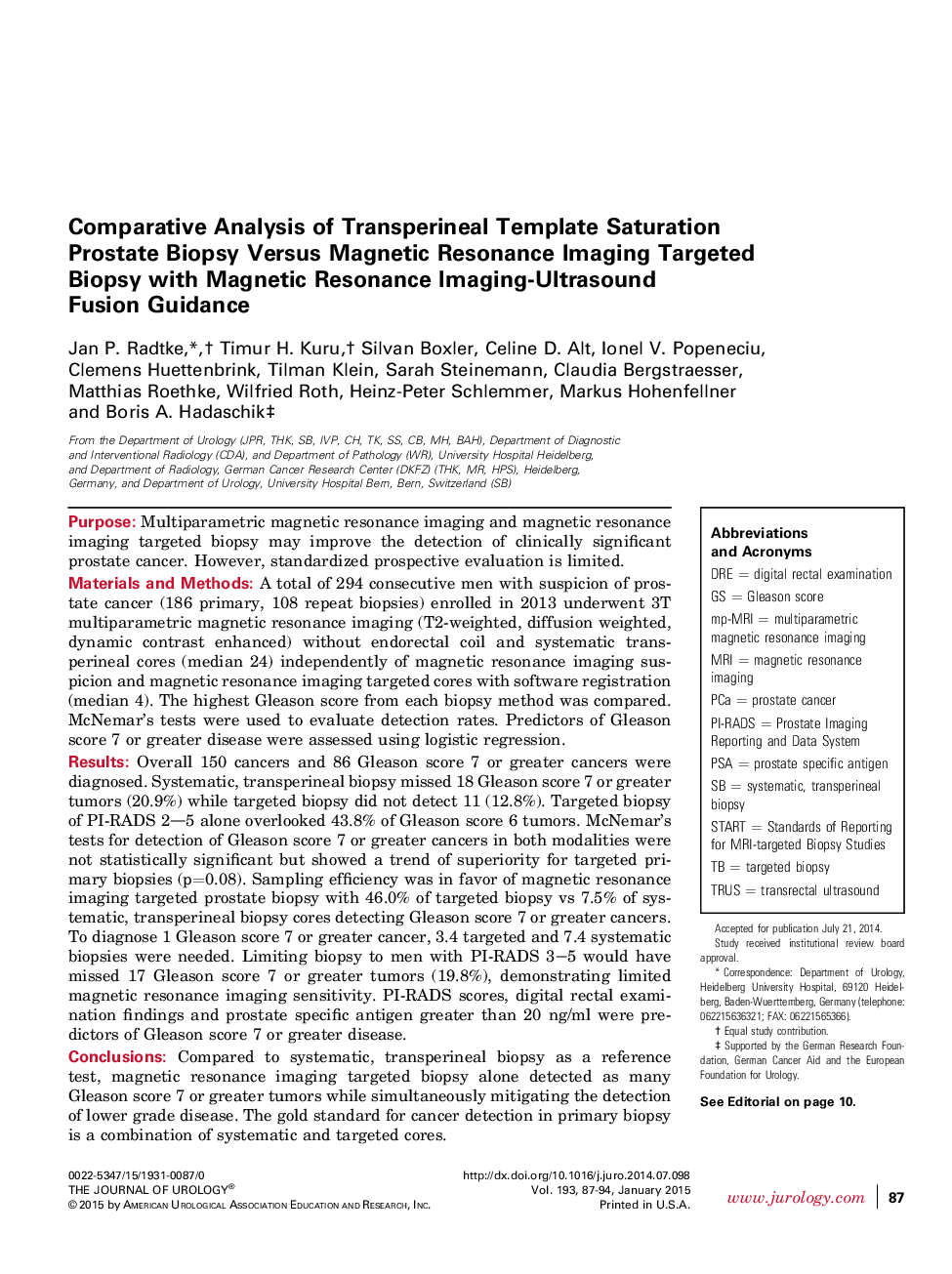| Article ID | Journal | Published Year | Pages | File Type |
|---|---|---|---|---|
| 3859788 | The Journal of Urology | 2015 | 8 Pages |
PurposeMultiparametric magnetic resonance imaging and magnetic resonance imaging targeted biopsy may improve the detection of clinically significant prostate cancer. However, standardized prospective evaluation is limited.Materials and MethodsA total of 294 consecutive men with suspicion of prostate cancer (186 primary, 108 repeat biopsies) enrolled in 2013 underwent 3T multiparametric magnetic resonance imaging (T2-weighted, diffusion weighted, dynamic contrast enhanced) without endorectal coil and systematic transperineal cores (median 24) independently of magnetic resonance imaging suspicion and magnetic resonance imaging targeted cores with software registration (median 4). The highest Gleason score from each biopsy method was compared. McNemar’s tests were used to evaluate detection rates. Predictors of Gleason score 7 or greater disease were assessed using logistic regression.ResultsOverall 150 cancers and 86 Gleason score 7 or greater cancers were diagnosed. Systematic, transperineal biopsy missed 18 Gleason score 7 or greater tumors (20.9%) while targeted biopsy did not detect 11 (12.8%). Targeted biopsy of PI-RADS 2—5 alone overlooked 43.8% of Gleason score 6 tumors. McNemar’s tests for detection of Gleason score 7 or greater cancers in both modalities were not statistically significant but showed a trend of superiority for targeted primary biopsies (p=0.08). Sampling efficiency was in favor of magnetic resonance imaging targeted prostate biopsy with 46.0% of targeted biopsy vs 7.5% of systematic, transperineal biopsy cores detecting Gleason score 7 or greater cancers. To diagnose 1 Gleason score 7 or greater cancer, 3.4 targeted and 7.4 systematic biopsies were needed. Limiting biopsy to men with PI-RADS 3–5 would have missed 17 Gleason score 7 or greater tumors (19.8%), demonstrating limited magnetic resonance imaging sensitivity. PI-RADS scores, digital rectal examination findings and prostate specific antigen greater than 20 ng/ml were predictors of Gleason score 7 or greater disease.ConclusionsCompared to systematic, transperineal biopsy as a reference test, magnetic resonance imaging targeted biopsy alone detected as many Gleason score 7 or greater tumors while simultaneously mitigating the detection of lower grade disease. The gold standard for cancer detection in primary biopsy is a combination of systematic and targeted cores.
